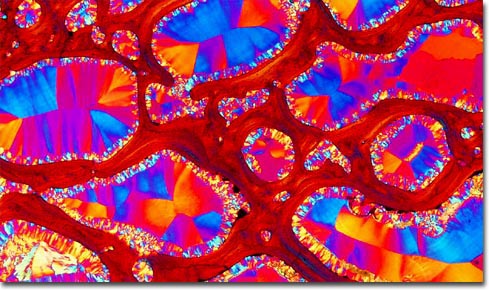|
In order for a substance to be properly classified as a mineral, it must be a natural material of inorganic origin and have a chemical composition that can be articulated through the use of a formula. The majority of minerals also have a characteristic crystalline structure. Though essential only in life, minerals remain even after death, appearing above in the Haversian canals of a fossilized dinosaur bone. In fact, more minerals are usually present in fossilized bones than those of the living because of the process of mineralization, which involves the replacement of organic material with minerals. The identification of specific minerals can often be carried out by examination of certain physical properties, but in some cases more elaborate analytic techniques, such as chemical analysis and X-ray diffraction, are required.
|
